Downtown Atlanta’s Lost Psychedelic Theme Park
Before there was the CNN Center, there was The World of Sid and Marty Krofft.
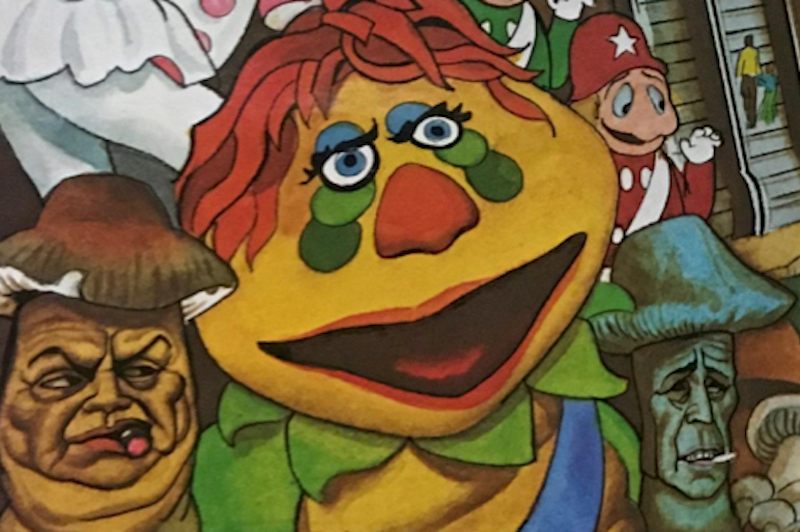
Today the CNN Center in Atlanta, Georgia, is the headquarters of a multinational news corporation. Inside, photo-snapping tourists mix with serious people in business attire, buzzing about, waiting for the next big news story to break. But what many people who didn’t grow up in the Atlanta area don’t know is that just decades ago, this physical nexus of straight-faced news was the home of a psychedelic indoor playground where you could ricochet around in a giant pinball machine, ride a crystal unicorn carousel, explore a world of living hats, or watch a puppet Elton John descend from the ceiling.
It only existed for a fleeting moment, but the specter of The World of Sid and Marty Krofft can still be felt, even decades after the space was transformed into a much less silly place.
The brothers Sid and Marty Krofft were behind some of the most iconic children’s entertainment of the 1970s. With shows such as H.R. Pufnstuf, The Bugaloos, Land of the Lost, Sigmund and the Sea Monsters, Lidsville, and other far-out celebrations of unleashed imagination, they created a whole universe of unique characters and concepts. Krofft shows played like live-action cartoons, and were known for their bizarre, fully costumed characters, cosmically high concepts, and bubbly musical numbers. Both at the time, and in the decades since, the Kroffts’ work has been assumed to be the product of drugged-out dreaming, but they have said that drugs had little to do with their creations, even while admitting that many of the people watching were probably high as a kite.
By the mid-1970s, their star had risen to the point that the brothers were able to open their own theme park.

The Omni International Complex opened in downtown Atlanta in 1976 as a grand commercial extension of the Omni Coliseum, which had opened just a few years earlier. Where the coliseum had the Atlanta Hawks and concerts by the likes of Elvis Presley and Frank Sinatra to draw crowds to the inner city, the complex space needed its own anchor. When it opened, it was home to two office buildings, a luxury hotel, shops, restaurants, and an ice-skating rink, but the jewel in its crown was The World of Sid and Marty Krofft, one of the first all-indoor amusement parks.
The Kroffts had no formal experience creating amusement parks, but their thriving television empire, with its surreal costumed characters and proudly artificial settings, seemed custom suited to such an attraction. Unsurprisingly, the finished park suggested a hallucinatory dream world, albeit contained within a massive shopping mall.
The park, much of which was open to the complex’s central atrium, consisted of multiple levels that visitors could make their way through starting at the top, and heading down. Guests would enter by riding up an eight-story escalator, where they would pass under two 18-foot mime statues that guarded the first level of the park, the Fantasy Fair. Described in one ad as a “wacky, wonderful spoof of the age-old carnival,” the floor featured roving live performances by sword-swallowers, psychics, jugglers, and clowns, all decked out in Krofft-ian strangeness.
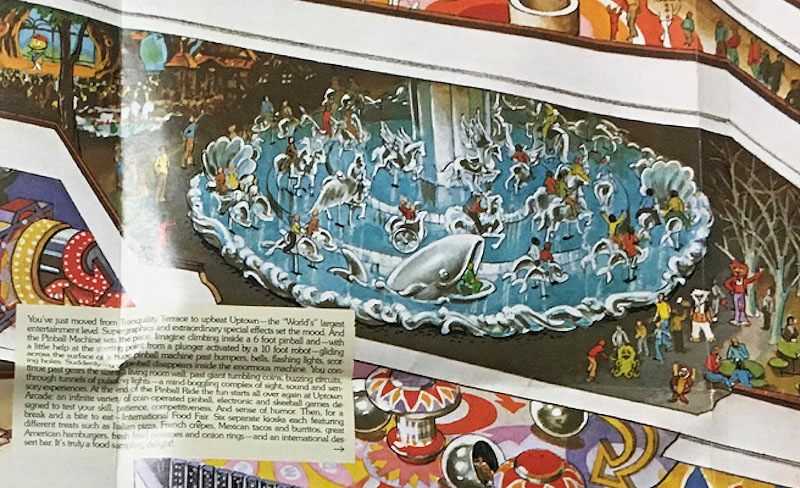
One level below that was Tranquility Terrace, where the vibe was decidedly hectic. The main attraction on this floor was the Crystal Carousel, a merry-go-round with concentric spinning rings where riders could mount unicorns, whales, and other creatures made to look like they were sculpted from crystal. There were also shops, places to eat, and an amphitheater with live performances by famous Krofft television characters such as Pufnstuf and Sigmund.
Below that was Uptown, which was home to the park’s largest ride, the Pinball Machine. It put guests inside of a cart shaped like a giant pinball and sent them pinging through the massive game. Fittingly, the ride spit riders out into an actual arcade.
After Uptown, there was Lidsville, a level of the park modeled after the Krofft’s show of the same name. This level was filled with hat-shaped buildings that were the homes of hat-shaped people (Krofft-logic), for guests to explore. It also featured a theater that hosted the park’s musical extravaganza, a showcase for puppet versions of popular music stars including Stevie Wonder and David Bowie. According to the brochure, the show also incorporated a patriotic finale with eagles, pilgrims, and the Liberty Bell.

The final section of the park lowered guests below the main floor in a mine shaft elevator to the Living Island Adventure, a cart ride through the world of H.R. Pufnstuf. During the ride, visitors were chased by Pufnstuf baddie Witchiepoo. Especially noteworthy was the grim Heavenly Slumber Cemetery, which was home to bizarre talking mushrooms “with the faces and voices of Cagney, Bogart, and Edward G. Robinson.”
The park marked its opening with a grand celebration on May 23, 1976. It was a star-studded, tux-and-tails affair that saw some 3,000 guests come out to inaugurate the attraction. In attendance were celebrities of the day including the singer Tony Orlando and the ice skater Peggy Fleming, as well as local big shots such as then-Atlanta Mayor Maynard Jackson and then-Georgia Governor George Busbee. According to the Atlanta Constitution, Mayor Jackson called it the “greatest opening since the opening of Gone With the Wind.” Orlando, who was friends with the Kroffts, summed up the spirit of the park by calling it the “innards of their minds” and a “megastructure thought up at a mega-moment.” A perfectly 1970s encapsulation of a perfectly 1970s creation.
But the good times, as they say, didn’t last.

From the outset, The World of Sid and Marty Krofft was expensive, with an initial cost estimate of $14 million (that’s about $60 million in 2017 dollars, adjusted for inflation). But even before it opened its doors, project costs had well risen past projections, and after the park debuted things only got worse. The carousel, which the Kroffts would later say had to be designed by “aerospace guys,” and the pinball coaster both experienced maintenance issues that drove up costs as well. By the end of its brief life, the park was projected to have cost as much as $20 million (or $86 million in today’s dollars).
In the beginning, curious crowds arrived in promising numbers, but they quickly dwindled for a number of reasons. For all the psychedelic sound and fury packed into every corner of the park, the entire experience only took about five hours. The ticket prices ($5.75 for adults, $4.25 for children) were also considered pretty high at the time. The only other amusement park in the region, Six Flags Over Georgia, was much cheaper, and offered many more hours of entertainment per visit.
But the main reason the Kroffts have often cited in the years since the park’s demise is that people simply didn’t want to bring their families to what was then considered a bad part of town. Atlanta officials had promised that downtown was going to improve, and it did, but in 1976, it was still a far cry from the tourist-friendly city center it is today.
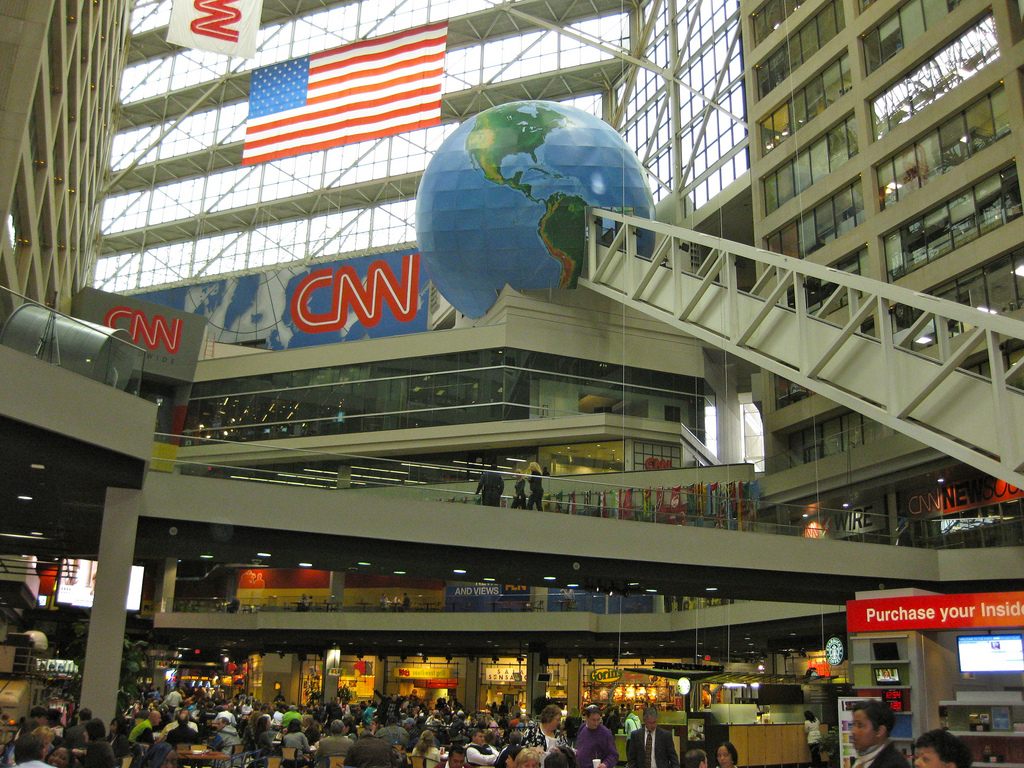
The park was built to accommodate 6,000 visitors a day. When it closed on November 7, 1976, just months after opening, it had only brought in an estimated 300,000 guests.
The Kroffts sought additional funding to keep the park open, but ultimately failed to convince any additional backers. They said they planned to reopen at a later date, and even open similar parks in other locations, but neither of those pledges would come to pass.
Today, the Kroffts continue to create children’s programs with their singular flair. Most recently they’ve relaunched updated versions of some of the properties that made them famous, including Electra Woman and Dyna Girl, and Sigmund and the Sea Monsters. They’ve never launched another theme park.
In 1987, CNN relocated its operations to the Omni International, eventually rebranding the entire thing as the CNN Center. Nearly all traces of the Krofft’s park have been wiped away, but the giant escalator, still the record holder for the longest free-standing escalator in the world, remains. Today it delivers people into a scale model of Earth, but its very existence recalls a time when it led to places far stranger.




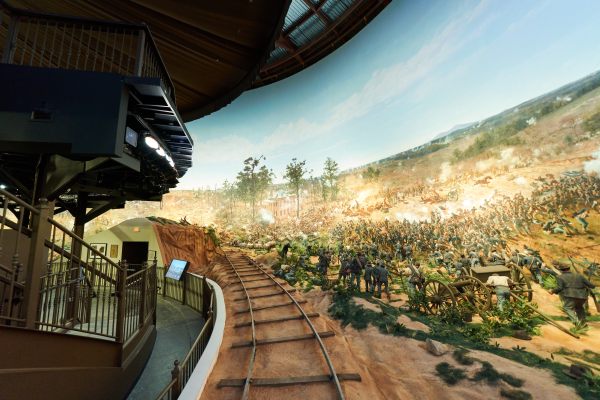
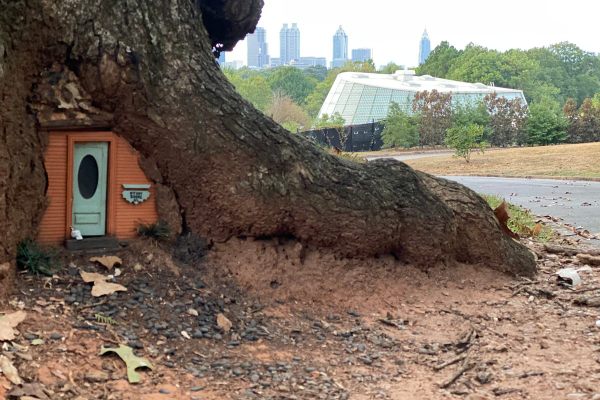




Follow us on Twitter to get the latest on the world's hidden wonders.
Like us on Facebook to get the latest on the world's hidden wonders.
Follow us on Twitter Like us on Facebook